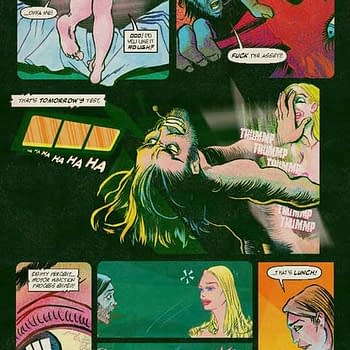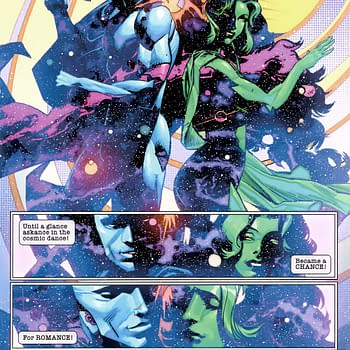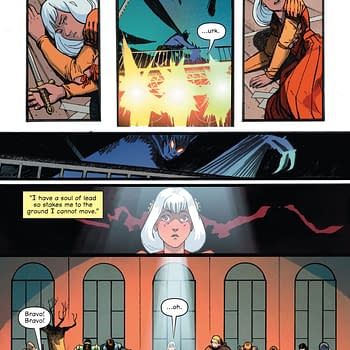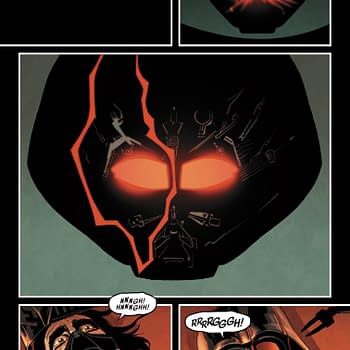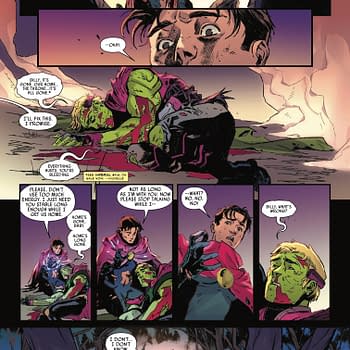Posted in: Comics, Recent Updates | Tagged: Comics, dennis o'neil, denny o'neil, denny o'neill, how to write comics and graphic novels, How to write comics and graphic novels by Dennis O'Neil
How To Write Comics And Graphic Novels by Dennis O'Neil #13 – The Rule Of Three
 Dennis O'Neil has a long history in the comics industry as both a writer and editor. He's best known for writing Green Lantern/Green Arrow and Batman, through the seventies, Spider-Man in the eighties and for editing Batman-related titles in the nineties. A widely published novelist and screenwriter, he is currently lecturing at the NYU on Writing Comics And Graphic Novels. Bleeding Cool is grateful to receive a taster of the course every week.
Dennis O'Neil has a long history in the comics industry as both a writer and editor. He's best known for writing Green Lantern/Green Arrow and Batman, through the seventies, Spider-Man in the eighties and for editing Batman-related titles in the nineties. A widely published novelist and screenwriter, he is currently lecturing at the NYU on Writing Comics And Graphic Novels. Bleeding Cool is grateful to receive a taster of the course every week.
I'm about to introduce you to an old colleague of mine: the three act structure. I didn't call him (it?) that when we first got together when I was a very green writer , and dinosaurs walked the Earth. Nor did I know, until years later, that through he was new to me, playwrights and maybe some screenwriters had been hanging with him for years. No, I was just realizing that with mouths to feed and no other source of income, I'd need to be pretty prolific and I questioned the reliability of my muse. So how the heck could I think about the stuff that had to issue from my typewriter to sort of insure that it was publishable, or at least not embarrassing garbage?
I came up with nothing ironclad. As we mentioned a couple of weeks ago, it'd be swell if there were a story algorithm; a defined process that would result in work that inevitably succeeds. But there isn't, and that's why you should consider what appears here as suggestions—signposts, maybe. (Remember the great lines from Bruce Lee's Enter the Dragon? "It is like a finger pointing to the moon. Concentrate on the finger and you miss all that heavenly glory.") What I did come up with, reinventing the wheel, was a three-part division of the story I proposed to tell. As threatened last week, let's call it O'Neil's Industrial Strength Can't Fail Super Homogenized structure for a single-issue superhero story.
Brace for it:
Hook –
Inciting incident.
Establish situation and conflict.
(Major visual action.)
Develop and complicate situation.
(Major visual action.)
Events leading to —
Climax.
You might want to add a quick denouement to tie up loose ends–show your characters' emotional states or how they were changed by the events of the narrative. But the operative word there is quick. Remember: story's over. Let's not overstay our welcome.
A few explanations: Why "major visual action?"
Well…this outline expects you to do a superhero story and visual action is the idiom of that genre, how conflict is often expressed. If you're not doing superheroes, or at least action-adventure, about a third of the way through your script should spin the story in an unexpected direction. (Syd Field's book Screenplay is very good on this.)
What is this "hook"?
It's something to interest reader, get him into the story, something to grab the reader's lapels. The first line of Hemingway's story "Light of the World" is a hook: "When the bartender saw us come in he put the cover on the free lunch counter." Gives you a lot of info in 16 words and presents you with an unstated question that you'll probably want to answer by continuing to read. Here's the first line of Chapter 1 of Alfred Bester's great Stars My Destination: He was one hundred and seventy days dying and not yet dead." Kinda motivates you to keep reading, huh?
By the way, this is not what the submissions guide that DC used to send out meant by "hook" In that usage, a story hook was a one line summary of what's good and/or unusual in the piece, something like, "Superman and Batman change places."
Okay, some of you might be asking why examine a one-issue paradigm? Nobody puublishes one-issue stories anymore. Well, first of all, that's not true. I've written four of them in he last couple of years, and I'm semiretired. And second…you can consider this the place from which we'll start on a journey to longer stories. We should arrive in about a week.
Dennis O'Neil teaches a ten week course on Writing Comics And Graphic Novels at the New York University. Classes are every Wednesday evening from 6.45pm to 9pm. For further information, please call NYU's School of Professional and Continuing Studies at Studies at 212 9987200







